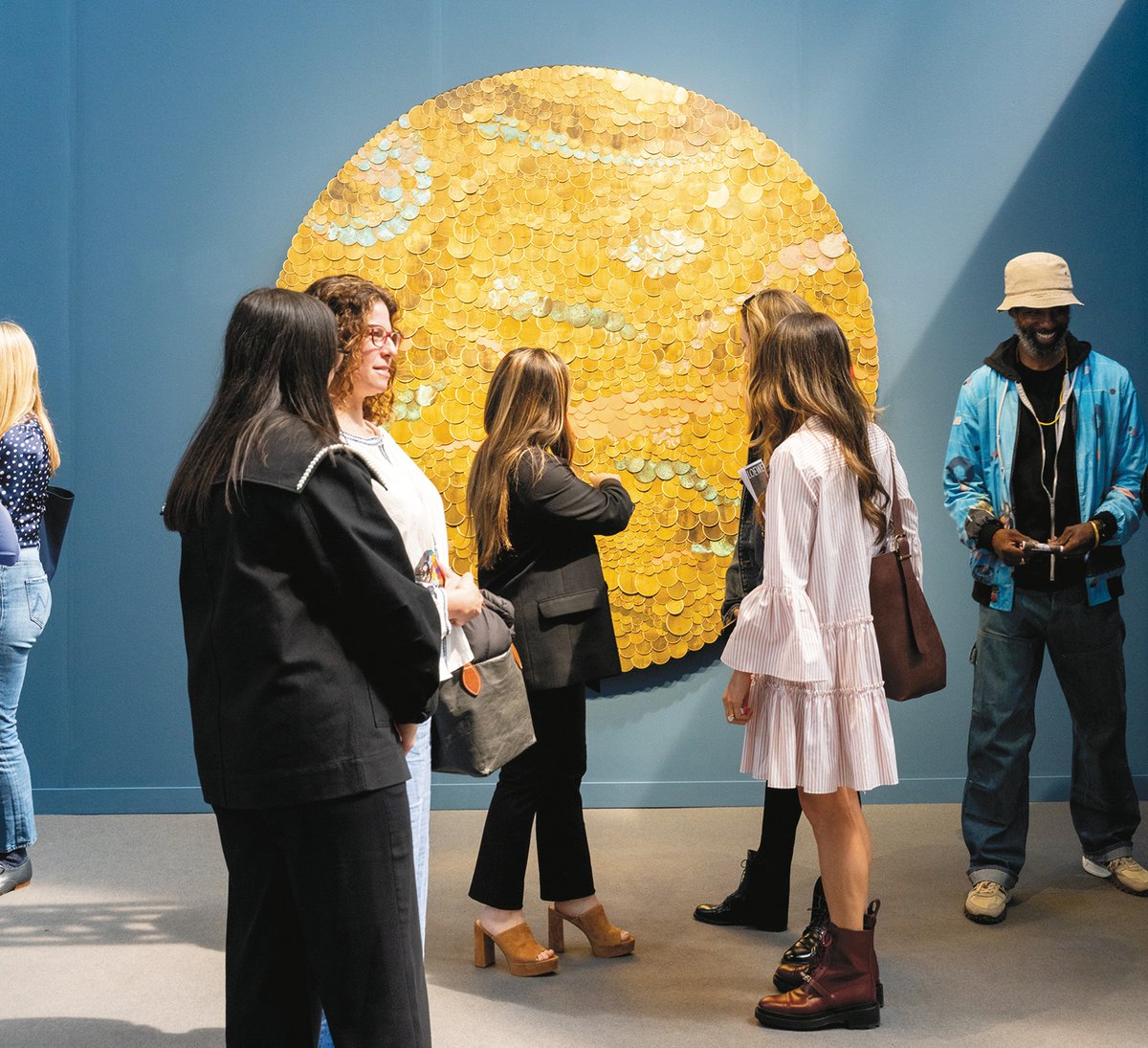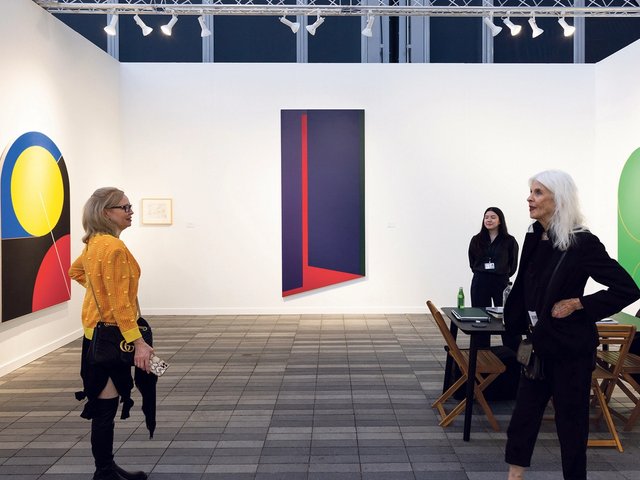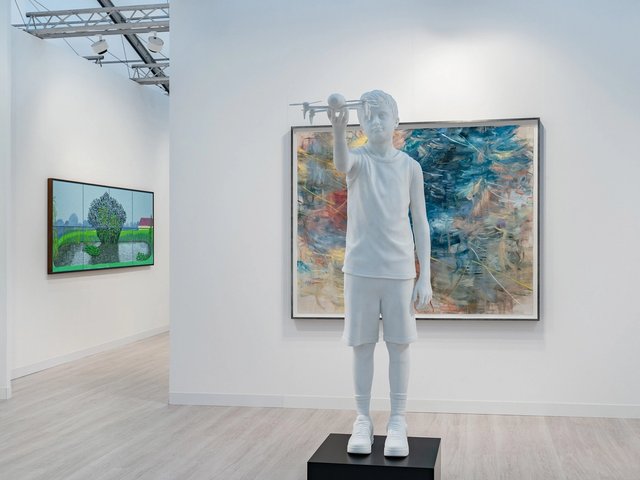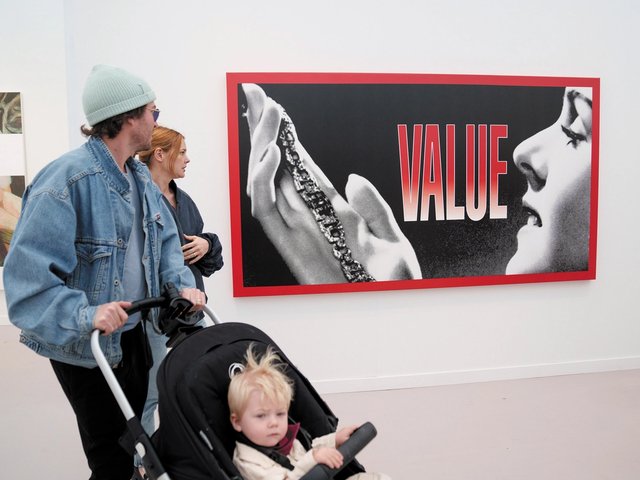The rain that has been covering New York City for the past week cleared up in time for the VIP opening of Frieze New York on Wednesday morning. Attendees in springwear choked the entrance and the escalators before being released onto the main floors. The question on most gallerists’ minds was if they would be in a buying mood.
“We know Frieze Los Angeles went really well, and it was an indicator for the strength of the art market at the beginning of the year,” says Christine Messineo, the director of Frieze’s fairs in the Americas. But a lot has happened since February.
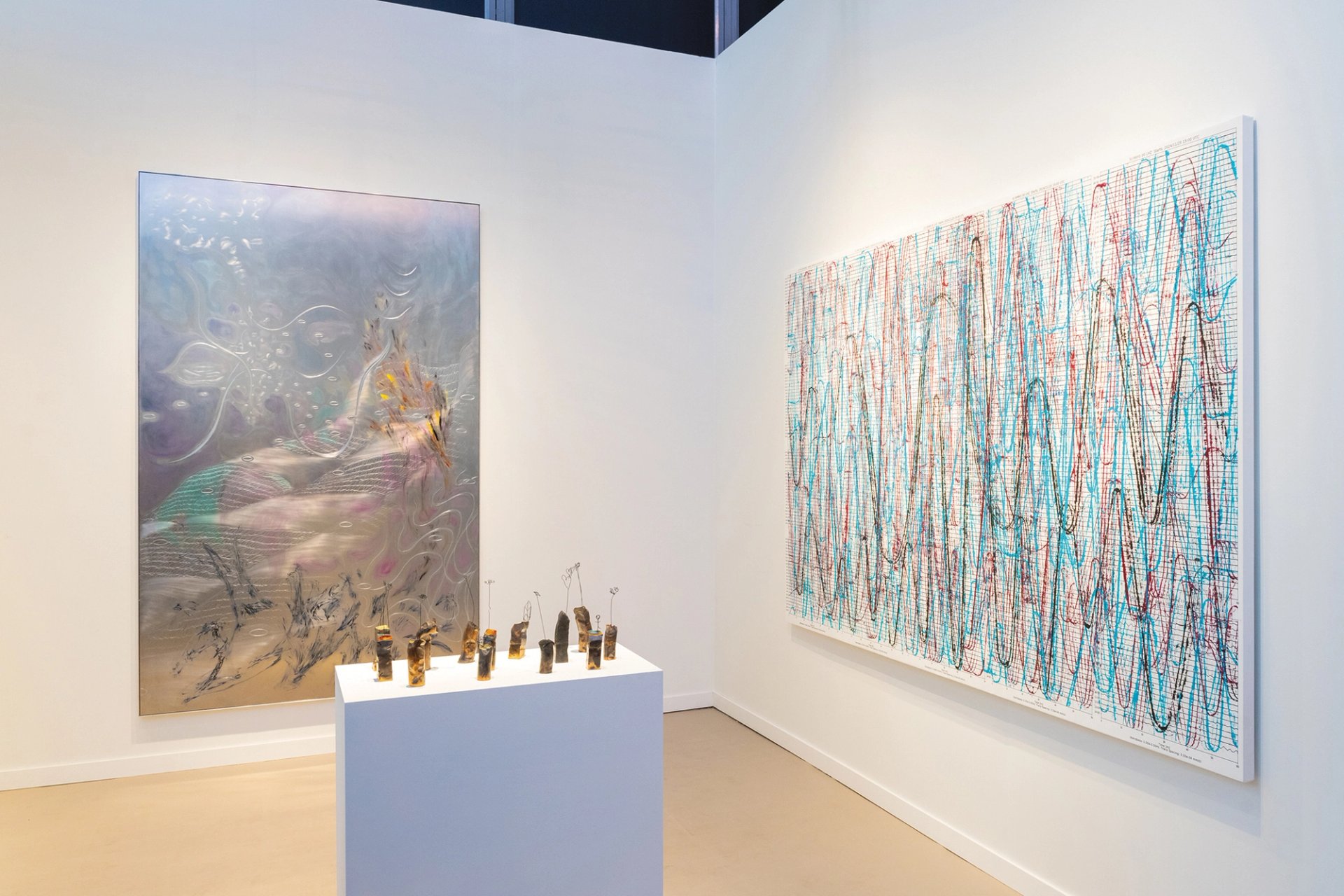
Kurimanzutto sold WangShui’s Osmotic Burst (2024, left) to the Dallas Museum Steven Molina Contreras
When President Donald Trump announced sweeping tariffs on 2 April (the so-called “Liberation Day”), the stock market took a plunge that rivalled some of Covid-19’s earliest, darkest days. The market has since begun to recover as tariff plans have been rolled back. But instability has become the norm during Trump’s second term, and gallerists are unsure of what to expect.
But, Messineo adds, Frieze New York benefits from its connections to the city’s many art institutions and cohort of elite collectors. “The strength of this city and this fair is how interconnected the institutional shows going on around the city are with the work that is represented here,” she says. “Every museum director in the city is here today.”
Many of the early sales at the fair resulted, in part, from gallerists’ strong connections to institutional forces. James Cohan gallery sold two works from its solo stand devoted to Tuan Andrew Nguyen to institutions. Outburst (2025), a large mobile made from bomb metal, sold for $185,000 to the Moderna Museet in Stockholm, and Scars (2025), made from pounded brass from artillery shells, went for $125,000 to an unnamed US museum.
“In the midst of this market fluctuation we have had a lot of success when we commit to a solo show,” says Paula Naughton, a senior director at James Cohan. “It tends to benefit our artists institutionally, and we saw that today with our sales.”
Meanwhile, Hauser & Wirth has sold work by artists who are getting major institutional shows in the city. Soul Painting ‘The Jungle’ (2025) by Rashid Johnson, who currently has a solo exhibition at the Guggenheim Museum, and Vista (2025) by Lorna Simpson, who will be exhibiting at the Metropolitan Museum of Art later this month, both sold. While the gallery did not disclose specific prices, pieces sold from its stand on preview day ranged from $20,000 to $1.2m. The Seoul-based G Gallery—showing in the fair’s Focus sector for galleries less than 12 years old—placed Yehwan Song’s Internet Barnacles, priced at $22,000, with the Heredium Museum in Taiwan. The artist currently has a solo show at Pioneer Works in Brooklyn.
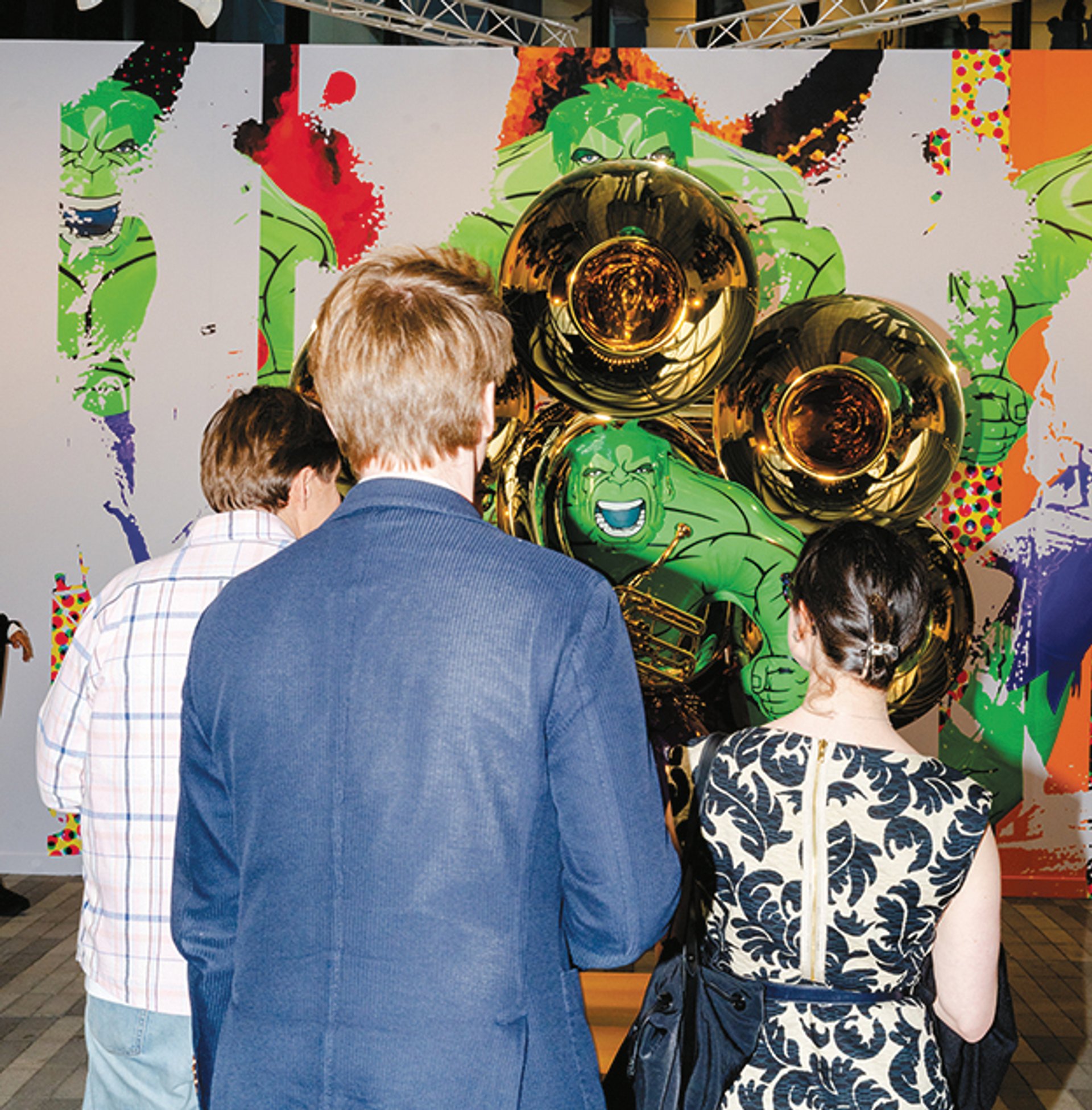
Gagosian reportedly sold Jeff Koons’s Hulk (Tubas), one of three inflatable works on its stand, for more than $3m Steven Molina Contreras
Within the fair’s first few hours, Perrotin gallery sold out its solo stand of paintings by Claire Tabouret, who was recently awarded a commission to design new stained-glass windows for Notre-Dame cathedral in Paris. Her works at Frieze were priced between $65,000 and $200,000. Kurimanzutto placed Osmotic Burst (2024) by WangShuiwith the Dallas Museum of Art.
Thaddaeus Ropac sold Liza Lou’s Zeugma (2024) for $225,000 and David Salle’s Bow Tie (2024) for $130,000, both to US collectors.
As one dealer who spoke candidly on condition of anonymity said: “It’s not like it was before, when everything was selling. Perhaps that’s why institutions are showing up so strongly this year—they have a chance to get the work. And their budgets were approved a while ago.”
Fewer foreign collectors
Philippe Charpentier, the co-founder of Mor Charpentier—which has spaces in Colombia and France—says it is not only European collectors who have stayed away from New York’s spring fairs this year. “It’s the Canadians and Latin Americans as well. The current situation is…not attractive to them,” Charpentier says, referencing Trump’s recent attacks on Canadian sovereignty and the president’s long-tense relations with many Latin American nations.
Asian collectors, however, have made the journey. For example, Karma gallery sold Reggie Burrows Hodges’s small-scale acrylic painting Referees: To The House (2021) for $175,000 and Alan Saret’s wire sculpture Magnetic Storm (1984) for $150,000 to an unnamed Chinese collector who has a private museum.
Emerging galleries from outside the US are using Frieze as a launchpad for their younger artists, making sure to bring smaller, more accessibly priced works with them. The Paris-based Galerie Sultana sold out of the diminutively scaled and detailed paintings by Jean Claracq on view at its stand for prices between $20,000 and $30,000 each, and also found buyers for two works by Jesse Darling, priced at €10,000 ($11,330) each.
“We could have sold everything in Paris, but we kept work back,” says Kate Park, Sultana’s director of sales and business development for Asia. “You have to diversify your collector base, and we’ve been wanting to increase Claracq’s presence in the US. This is the place to do it.”
Mor Charpentier sold out its solo stand of small-scale works by the French artist Malo Chapuy, with paintings ranging from €12,000 to €22,000 ($13,600-$25,000). Chapuy’s works create an alternate history rendered in the style of Medieval paintings, embedding gas masks, electric windmills and alien ships into what, at first glance, appear to be historic portraits or religious scenes. Meanwhile, the Lisbon-based gallery Madragoa had some success with its solo presentation of Rodrigo Hernández’s small paintings of fruit bats. Priced between $6,500 and $11,000, three works flew off the stand’s walls in the fair’s opening hours.
But, in the words of Marc Jacobs, sometimes “more is more”. On the main floor of the fair, Gagosian is showing a trio of Jeff Koons’s faux inflatable bronze and mixed-media sculptures of the grimacing superhero the Incredible Hulk. Fitted with musical instruments, they are green and loud—the works’ embedded instruments were even “played” before the fair opened. One of these sculptures, Hulk (Tubas) (2004-18), reportedly sold for more than $3m, making it likely the biggest sale of the fair’s preview day. Or, as Hulk might put it: “Me save market!”
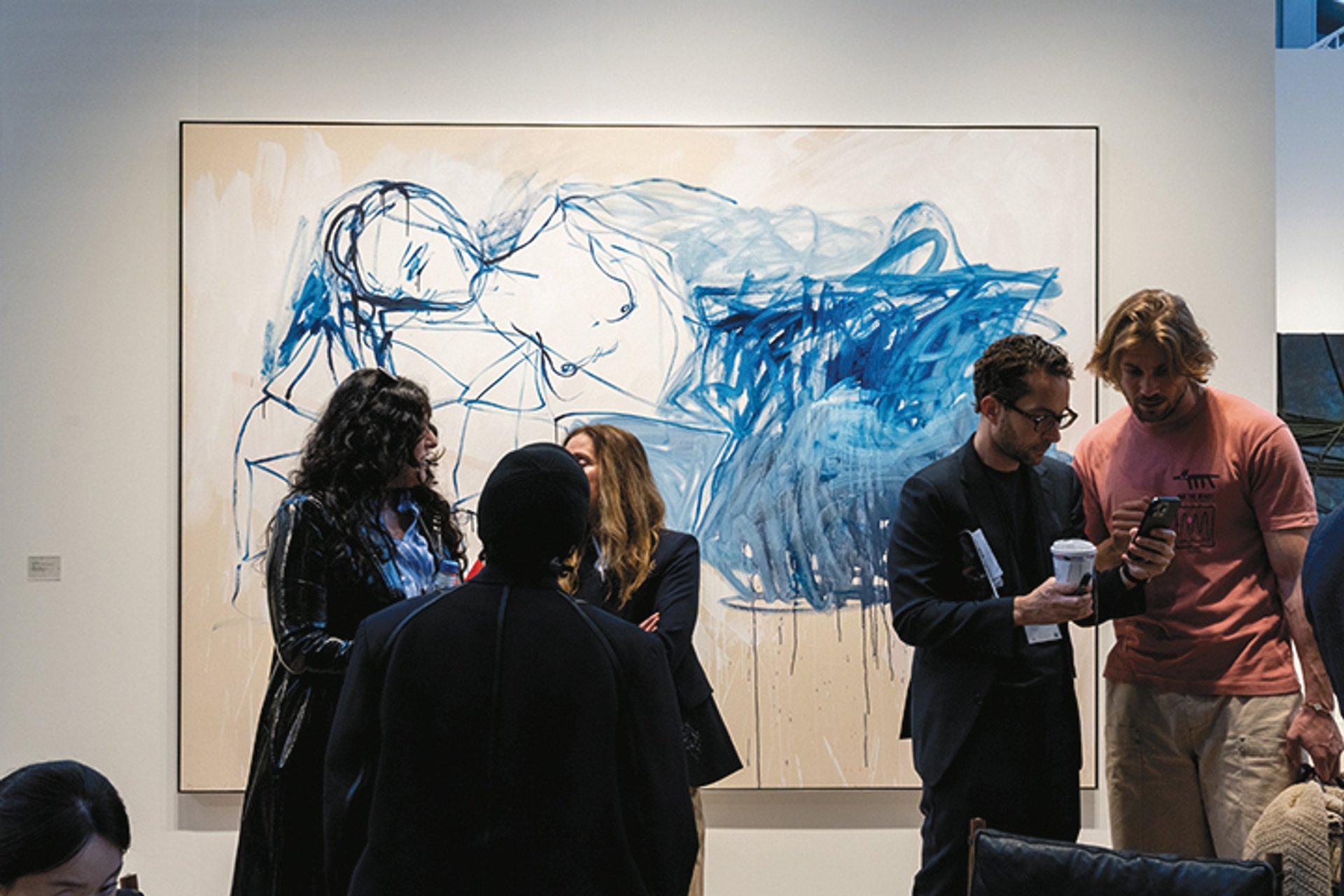
White Cube sold a Tracey Emin painting for £1.2m ($1m) Steven Molina Contreras
VIP day sales
• White Cube sold a Tracey Emin painting for £1.2m ($1m).
• Karma sold a range of works, including a painting by Gertrude Abercrombie for $350,000 and an oil painting by Richard Mayhew for $350,000.
• Pace sold six Adam Pendleton works, which were priced between $165,000 and $425,000.
• Nara Roesler sold an oil painting by Tomie Ohtake for $350,000.
• Mendes Wood DM sold Kishio Suga’s eight-part installation Sliced Stones (2018), priced in the range of $200,000 to $300,000.
• Tina Kim Gallery sold a work by Lee ShinJa for $200,000 and a textile work by PACITA ABADfor $150,000.
• Gallery Hyundai sold several works by Moon Kyungwon, priced between $50,000 and $200,000.
• 303 gallery sold a Rob Pruitt painting for $175,000.
• Goodman Gallery sold a work by Carrie Mae Weems that is promised to a European institution for $100,000.


